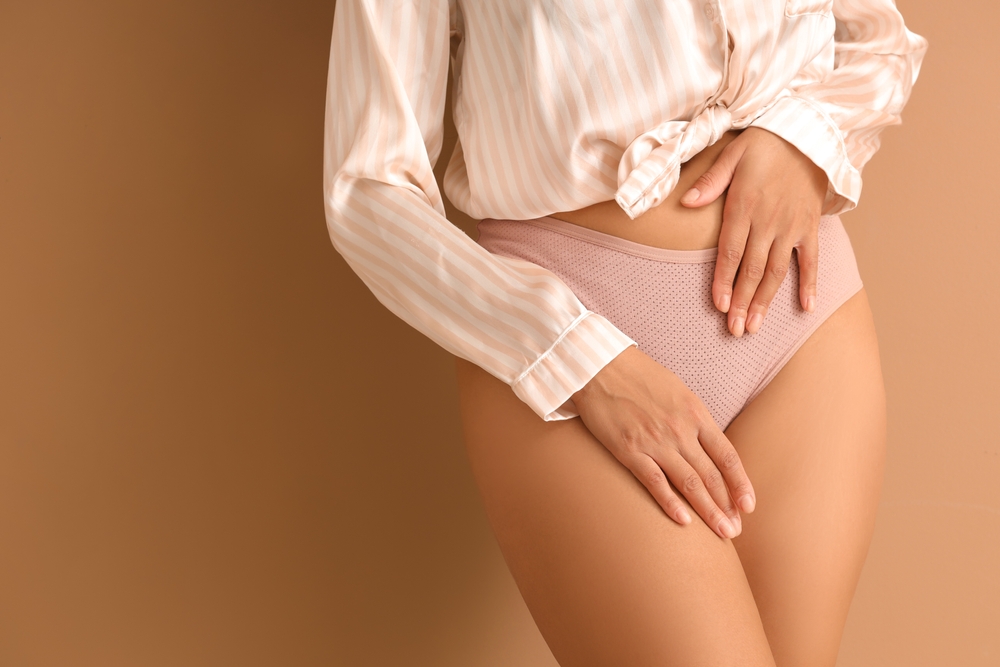That burning, itching, and strange discharge down there? It might have more to do with what’s on your plate than you ever imagined. While your doctor hands out prescriptions for antifungals and antibiotics, the real solution might be hiding in your kitchen. The connection between your diet and vaginal health isn’t just speculation. It’s backed by emerging science that’s reshaping how we think about those uncomfortable infections that keep coming back.
The delicate ecosystem living inside you
Your vagina is home to a complex community of microorganisms that would fascinate even the most dedicated biologist. This vaginal microbiome contains billions of bacteria and fungi living in a carefully balanced ecosystem. When everything’s working properly, beneficial bacteria like Lactobacillus species dominate, creating an environment that’s slightly acidic and hostile to troublemakers.
But this balance is remarkably fragile. When something disrupts it, opportunistic organisms like Candida albicans or bacteria associated with bacterial vaginosis can multiply rapidly, leading to those all-too-familiar symptoms.
What many women don’t realize is that the foods you eat have a direct impact on this delicate ecosystem. Your diet doesn’t just feed you. It feeds the microorganisms living inside you, for better or worse.
Sugar, the ultimate troublemaker
If vaginal infections had a best friend, it would be sugar. High sugar consumption doesn’t just affect your waistline or increase diabetes risk. It can dramatically impact your vaginal microbiome in ways that promote infection.
When your blood sugar rises, so does the sugar content in all your bodily secretions, including vaginal fluids. Yeast organisms like Candida albicans feast on this sugar, fueling their growth and reproduction.
High sugar consumption temporarily suppresses immune function, giving opportunistic organisms a chance to establish themselves before your body can fight back effectively.
Your gut and vaginal microbiomes are connected. Sugar promotes the growth of unhealthy gut bacteria, creating systemic effects that can impact vaginal health.
Women who frequently experience vaginal yeast infections often notice a pattern. Indulging in sugary foods or drinks frequently precedes an infection within 24-48 hours. This isn’t coincidence. It’s your body responding to a sudden change in its internal environment.
The sugar connection extends beyond obvious sweets. Simple carbohydrates like white bread, pasta, and rice quickly convert to sugar in your bloodstream, potentially triggering the same cascade of effects.
Dairy’s complicated relationship with vaginal health
For many women, dairy products have a complicated relationship with vaginal health. Some find that eliminating dairy dramatically reduces their infection frequency, while others notice no difference.
Lactose, the sugar found in milk, can feed yeast organisms in sensitive individuals, especially those with lactose intolerance who don’t fully digest this sugar.
Commercial dairy contains hormones that can potentially disrupt your own hormonal balance, indirectly affecting vaginal health.
For women with dairy sensitivities, consuming dairy products triggers inflammatory responses that can disrupt the vaginal microbiome.
The dairy-infection connection seems strongest in women who already have some level of dairy sensitivity. If you suspect dairy might be contributing to your vaginal health issues, a two-week elimination trial might provide valuable insights.
The surprising probiotic powerhouses
While some foods may trigger infections, others actively promote vaginal health by supporting beneficial bacteria. These probiotic powerhouses don’t just include yogurt, though that’s often the first recommendation.
Kimchi, sauerkraut, kefir, and kombucha contain living probiotic organisms that support your microbiome. These traditional foods have been linked to reduced infection rates in several studies.
Garlic, onions, leeks, asparagus, and Jerusalem artichokes contain prebiotic fibers that specifically feed beneficial bacteria, helping them outcompete problematic organisms.
Long used as a folk remedy, garlic contains powerful antifungal compounds. Consuming it regularly may help prevent yeast overgrowth, though the internet advice about inserting garlic cloves vaginally is definitely not recommended by medical professionals.
The probiotic approach works through multiple mechanisms. These foods introduce beneficial bacteria directly into your digestive system, where they can influence your entire body’s microbiome. They also help maintain proper immune function and reduce inflammation, creating conditions where your body can better maintain its natural balance.
The shocking pH connection
Your vagina naturally maintains an acidic environment, with a healthy pH typically between 3.8 and 4.5. This acidity is your body’s built-in protection against many infections. When this pH rises, becoming less acidic, it creates an environment where harmful bacteria thrive.
Diet plays a surprising role in your body’s overall pH balance, including vaginal pH. While you can’t dramatically change your blood pH through diet, certain foods support your body’s natural pH-balancing mechanisms.
- Alkaline-forming foods: Most fruits and vegetables have an alkaline-forming effect in your body, supporting proper pH balance throughout your systems.
- Acid-forming foods: Excessive meat, processed foods, and sugar can create more acidic conditions that may indirectly impact vaginal pH.
- Hydration matters: Proper water intake helps your body maintain appropriate pH levels and flush toxins that might contribute to infections.
The pH connection helps explain why diets rich in fresh produce are consistently associated with better vaginal health in research studies. These plant-based diets support your body’s natural regulatory mechanisms.
Beyond food, the lifestyle factors that matter
While diet significantly impacts vaginal health, several related lifestyle factors work alongside nutrition to either promote or prevent infections.
- Stress and sleep connection: Chronic stress and poor sleep disrupt your immune function and hormone balance, creating conditions that favor infection regardless of diet.
- Exercise benefits: Regular physical activity improves immune function and helps regulate blood sugar, potentially reducing infection risk.
- Clothing choices: Tight synthetic underwear creates the warm, moist environment that yeast and bacteria love. Cotton underwear and looser clothing can make a significant difference.
- Intimate product selections: Scented tampons, pads, douches, and washes disrupt your vaginal microbiome. Unscented, natural products better preserve your natural defenses.
These factors don’t exist in isolation. They interact with your diet to either support or undermine vaginal health. The woman who exercises regularly, manages stress effectively, and chooses appropriate clothing and products gives her dietary changes the best chance to positively impact her vaginal health.
Creating your personal prevention plan
Preventing recurring vaginal infections often requires a personalized approach. While general guidelines help, each woman’s body responds differently to specific dietary changes.
Consider keeping a food and symptom journal to identify your personal triggers. Many women discover patterns they never noticed before. That weekend wine and cheese indulgence or the birthday cake celebration might consistently precede infections.
A basic prevention plan might include:
- Sugar reduction strategy: Gradually decrease added sugars while increasing naturally sweet foods like fruit to satisfy cravings.
- Probiotic incorporation: Add fermented foods daily or consider a high-quality supplement specifically designed for women’s health.
- Immune-supporting foods: Include zinc-rich foods like pumpkin seeds, vitamin-C rich fruits and vegetables, and antioxidant-packed berries.
- Hydration commitment: Make water your primary beverage, aiming for at least eight glasses daily.
For women with recurring infections, more dramatic dietary changes might be warranted. Some find that temporarily eliminating all sugar, dairy, alcohol, and refined carbohydrates for two weeks, then slowly reintroducing them one by one, helps identify their specific triggers.
Remember that dietary changes typically take time to show results. The microbiome doesn’t transform overnight. Consistency over weeks, not days, yields the most noticeable improvements in vaginal health.
The food-vaginal health connection represents a powerful opportunity to address recurring infections from their root cause, not just treat symptoms as they appear. While medications certainly have their place, the food choices you make every day might be your most powerful tool for maintaining comfort and health in this most sensitive area.












